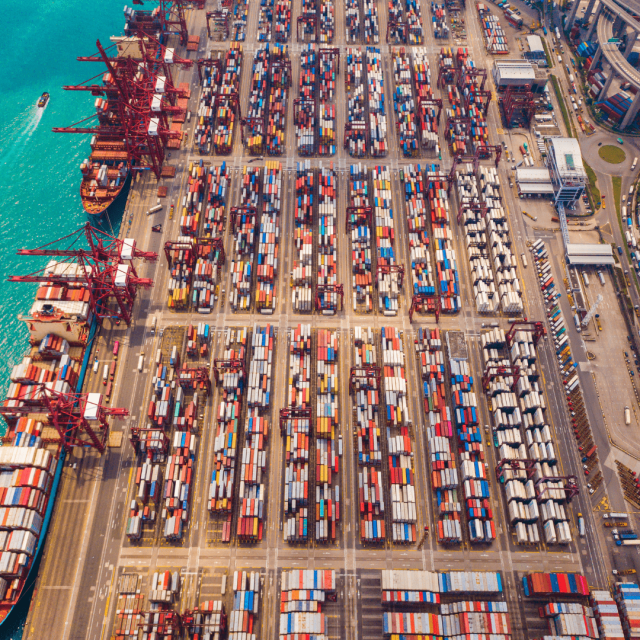The history of Containers: Explained
Outside of the logistics sector, many individuals don’t consider shipping containers that deliver items to shops. It might be difficult to understand how challenging it was to transport goods around the world before the development of the basic shipping container.
Fortunately, several developments continue to advance the transportation and logistics sector and facilitate global trade.
So what is a modern shipping container
A typical shipping container is an essential steel vessel for commodities transportation, the most commonly used. The majority of shipping containers have standardised dimensions, making it simple to load and unload cargo on various transport modes, even if it may not appear revolutionary.
The ordinary shipping container, however, has a lengthy history and, of course, is a remarkable individual.
The time before standardised containers
Prior to the introduction of shipping containers, the break-bulk cargo was handled manually. Pickups were used to transport goods from the factory to ships, warehouses, boats, and other locations. As shipment frequency rose, this system became increasingly unreliable and necessitated excessive processing, which added to delays, expenses, and time loss.
At the end of the 18th century, businesses in Britain used shipping containers for combined rail and horse-drawn transport for the first time. Railroads were conveying containers suitable for various means of transportation by the 1830s. Standard-sized tiny containers were utilised by the U.S. Army during World War II, which sped up the supply chain.

McLean: A revolutionary in the shipping business
The initial conventional shipping container was created and patented in the USA in 1956 by Malcolm McLean. Even though he didn’t transport over the ocean, he was the owner of the biggest trucking firm in the nation at the time.
McLean gradually developed ideas about how to streamline and effectively use multimodal transportation.
Cargo was typically loaded and unloaded in odd-sized wooden containers when McLean first established his trucking business. He was astounded at how ineffective this process was as he observed dock loaders move and shift freight.
A standardised, intermodal freight transfer procedure would benefit shipping businesses and haulage carriers, and McLean was aware of this.
How Pan Atlantic Tanker Company helped build history
When McLean realised it was time to transform the logistics sector, he bought Pan Atlantic Tanker Company along with all of its shipping resources. With it, he began experimenting with more effective truck loading and unloading. McLean eventually invented the typical shipping container.
It is sturdy, theft-proof, dependable, and simple to transfer. The Ideal X, the first container ship, left Port Newark in April 1956 and arrived in Houston without incident.
The advantages of standardised dimensions
International trade was significantly altered by standard containers, which included a number of changes that included:
- Reduced manual labour: The use of containers drastically altered the nature of port towns all over the world by reducing the amount of labour necessary for loading and unloading. The workforce was replaced by cranes, and ports expanded to handle bigger ships and loading docks.
- Enhanced security: The start of cargo travelling safely and securely in shipping containers has decreased theft and damage throughout every step of transportation.
- Efficiency gain: Innovation in transportation methods decreased the cost of international trade and sped up its pace by drastically cutting shipping times.
90 percent of the world’s freight was moved by container shipping less than 35 years after McLean’s invention. Our world has been moulded by containerization, which enables the quick and secure transportation of millions of items every day.
There is no question that this invention had an impact on globalisation and the global economy.
The Evolution
From 1956 to today, the standard shipping container has evolved in various ways to meet the expectations of the 21st century. Everyone wants an efficient supply chain, and modern-day shipping containers allow that. Here, we’ve highlighted the most prominent ways the standard shipping container has evolved.
Although the design of the shipping container is equally significant, standardisation is a crucial component. All types of freight, including perishable commodities and dry goods, can now be transported in shipping containers.
The following are more instances of unusual goods that containers are designed to transport:
- Transporting several vehicles at once in safety was made possible by car containers.
- Transporting temperature-sensitive goods, such as food and pharmaceuticals, was made possible by the use of refrigerators and other refrigeration devices in containers.
- Two sets of doors were located on either side of a tunnel container. Two doors make it possible to load and unload items more quickly. The majority of shippers utilise these containers when they have to repeatedly discharge and reload their cargo.
Today’s day and age
Today’s shipping containers are designed to deter theft since no one wants to deal with stolen cargo. Due to Malcolm McLean, standard shipping containers are among the most secure ways to transport your merchandise. Different locks are used on shipping containers, and some even include wireless security systems.
Carbon: The biggest menace for the future
Conquering various carbon problems is a significant problem for the shipping sector.
The common shipping container, however, is one of the cleanest innovations in the transportation sector.
The fact that the containers are reusable and may carry hundreds of shipments over an extended period of time is the most important aspect.
